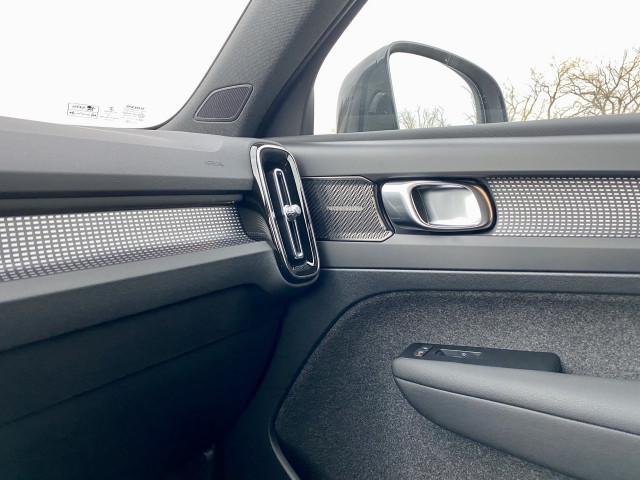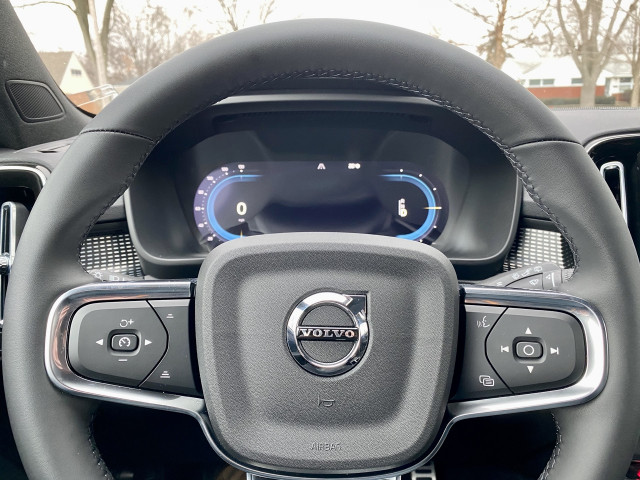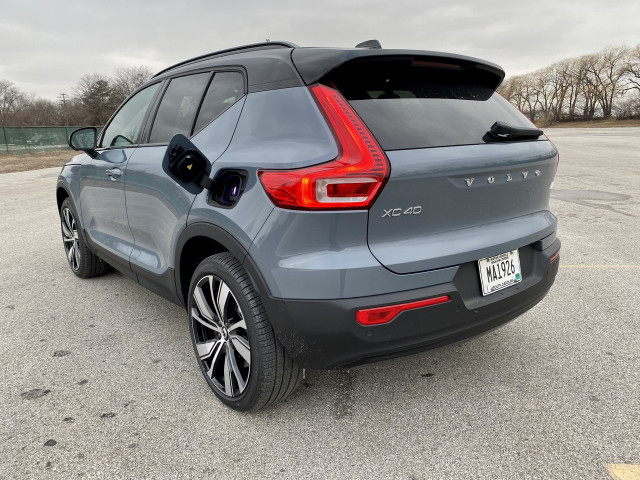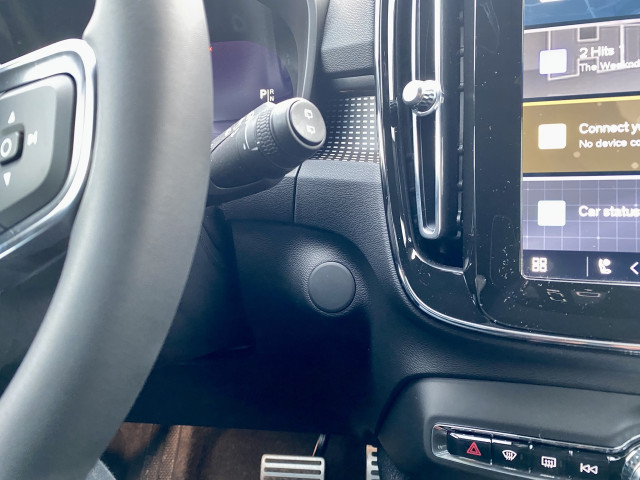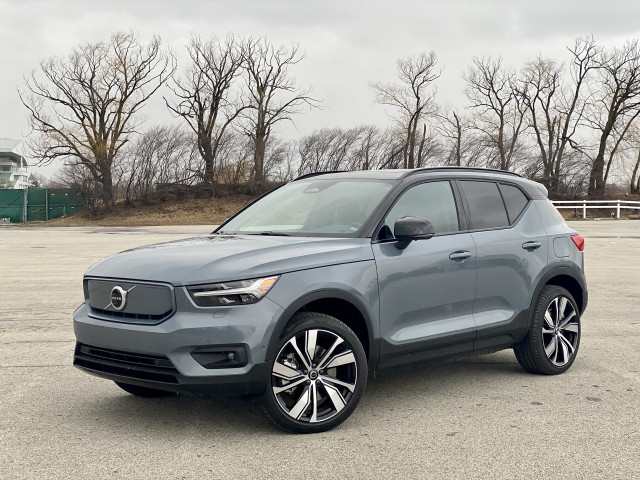The 2022 XC40 Recharge is an electric vehicle caught in the middle of a rapidly developing electric vehicle marketplace. Sharing a platform with the XC40 gas model, the small crossover is only one year old and it’s already been upgraded. This year, the range increases from 208 to 233 miles, and a surround-view camera system comes standard, as does wireless smartphone charging. And Volvo has already announced a fresher version of the XC40 Recharge, likely as a 2023 model.
Unlike the gas model, there’s no Lava orange interior trim, and the storage cubby under the driver’s seat is gone. After a week of testing it in the cold and snow around Chicago, this new car leading the charge for Volvo’s electric vehicle plans felt kinda old. It’s not, especially compared to its gas-powered sibling, but newer EVs such as the Ford Mustang Mach-E and Hyundai Ioniq 5 are more nuanced.
Here’s what’s good and what could use improvement on the 2022 Volvo XC40 Recharge in its top Twin Ultimate trim.
Hit: Volvo style
Minimalism works, especially on the inside. The XC40 Recharge interior looks a lot like the gas model, down to the driveshaft tunnel running down the center of the floor and a plugged hole where the ignition switch goes in the gas car. A 9.0-inch vertical touchscreen flanked by vertical vents centers the dash without overwhelming it, and the only buttons are front and rear defrosters, hazards, a tuning knob, and a volume dial. It’s the cleanest dash around, accentuated by Volvo’s studded aluminum trim.
Miss: Feels dated
The digital instrument cluster is simpler yet more limited than other new cars, electric or otherwise. The digital speedo and energy meter can be marginalized to the sides for an excellent Google Maps view or for navigation, or it can be blank and the gauges larger. The information age skipped this cluster. Press the right steering wheel button and it’ll temporarily show the tripmeter. The upper and lower menu bars show state of charge and driver-assist features, but it feels like info is missing compared to newer EVs.
Controls for drive modes or regenerative braking are hidden in the touchscreen menus, which gives the cockpit that cleanliness. The only drive mode option adjusts the steering heft, and the choice of regenerative braking is either a grabby one-pedal driving mode or a normal mode that simulates coasting to a stop like a gas car.
Hit and Miss: Simple but could have more room
The upside is that it’s simple to operate the XC40 Recharge, and its main controls function the same as in the gas-powered XC40. Get used to talking to Google Assistant for most vehicle functions, and there’s virtually no need to fiddle with the limited cluster or buried touchscreen options. Head, leg, shoulder, and cargo room are the same as in the gas model, which means it doesn’t take advantage of the roomier floor plan of a dedicated EV platform. For Volvo fans considering a switch to electric, the XC40 Recharge makes for a relatively seamless transition. Just remember to hit the unlock button in the charge portal when unplugging it.
Hit and Miss: No start, no worries
There’s no ignition switch, or a start stop button. Get in, buckle up, switch the console lever to R or D and go. It’s great when you’re running late. To park, push the P button and get out. It’s simple, but unnerving. The XC40 Recharge is not the only electric vehicle to do this, but after a week of testing it, I was still unsettled enough to hit the lock button on the fob repeatedly while walking away from it.
Hit and Miss: Performance
Every XC40 Recharge comes with a dual-motor powertrain and all-wheel drive. Output is rated at an impressive 402 hp and 486 lb-ft of torque, specs that far exceed the base XC40 T5 gas model (248 hp and 258 lb-ft). It jumps off the line and darts through traffic quick enough to hit 60 mph in the mid four-second range, but at 4,760 lb it doesn’t rip like its specs would suggest. With the battery in the floor between the axles and the ground clearance at 6.9 inches (the XC40 T5 sits at 8.3 inches), the XC40 Recharge has a lower center of gravity and stays relatively planted. Yet other electric crossovers such as the Ford Mustang Mach-E and Hyundai Ioniq 5 handle better and lack the body lean of the XC40 Recharge.
Miss: Inefficient
The 2022 XC40 Recharge’s increased range doesn’t offset its low efficiency ranking for AWD electric crossovers. It uses 39 kwh per 100 miles, according to the EPA. The most efficient AWD electric vehicle, the Tesla Model 3, uses 26 kwh per 100 miles; the Model Y AWD uses 28 kwh; the most efficient AWD variants of the Hyundai Ioniq 5 and Ford Mustang Mach-E get 34 kwh. The inefficiency is notable in cold weather states and for drivers who log mostly highway miles, as I did in my week with the XC40.
Efficiency isn’t a deal breaker because the charms of the XC40 Recharge outweigh the criticisms. But less expensive electric crossovers launched in the past year feel fresher.
_______________________________________
2022 Volvo XC40 Recharge Twin Ultimate
Base price: $52,795, including $1,095 destination
Price as tested: $60,090
Drivetrain: 78-kwh lithium-ion battery pack with dual-motor AWD, 402 hp and 486 lb-ft
EPA fuel economy: 223-mile range, 85 MPGe
The hits: Volvo style, good transition EV, good performance
The misses: Feels dated, relatively inefficient
Source: Read Full Article

